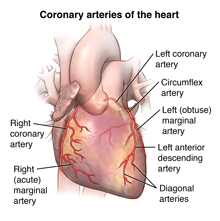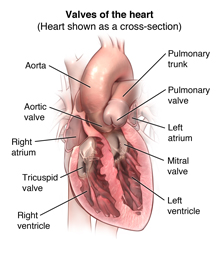Basic Anatomy of the Heart
About the heart
The heart is the hardest working muscle in the human body. Located almost in the center of the chest, the adult human heart is about the size of a fist.
At an average rate of 80 times a minute, the heart beats about 115,000 times in one day, or about 42 million times in a year. In a 70-year lifetime, an average human heart will beat more than 2.5 billion times. Even when a person is at rest, the heart continuously works hard.
The average heart rate for children 10 years and older and adults is 60 to 100 beats per minute. In a well-trained athlete, the heart rate can be healthy at a rate of 40 to 60 beats per minutes.
How the heart works
The cardiovascular system is made up of the heart and blood vessels. It's responsible for circulating blood throughout your body to supply the tissues with oxygen and nutrients.
The heart is the muscle that pumps blood filled with oxygen and nutrients through the blood vessels to the body tissues. It is made up of:
4 chambers (2 atria and 2 ventricles) that receive blue (deoxygenated) blood from the body and pump out red (oxygen-rich) blood back to it:
The atria receive blood coming back to the heart.
The ventricles pump the blood out of the heart.
Blood vessels, which include a network of arteries and veins that carry blood throughout the body:
Arteries transport blood from the heart to the body tissues.
Veins carry blood back to the heart.
4 valves to prevent backward flow of blood:
Each valve is designed to allow the forward flow of blood and prevent backward flow.
An electrical system that serves as a natural pacemaker and stimulates contraction of the heart muscle.


Connect with us:
Download our App: